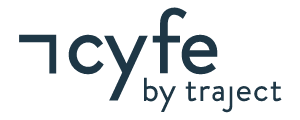Let's start with the question: What is a website's ROI (Return on Investment)?
ROI (Return on Investment) for a website is a performance metric that helps measure the efficiency and profitability of your online investment. It compares the financial gains from your website (revenue generated or goals achieved) against the costs associated with running and promoting the site.
The ROI formula for a website is: ROI = (Net Profit / Total Investment) x 100
Where:
Net Profit is
The revenue generated by the website minus its associated costs (e.g., website development, hosting, marketing, advertising, and maintenance costs).
Total Investment is
The sum of all the costs incurred in creating, maintaining, and promoting the website.
A positive ROI indicates that your website generates more revenue than the costs incurred, which means your investment pays off. A negative ROI, on the other hand, suggests that your expenses are higher than the revenue generated, indicating that you need to reevaluate your strategies and optimize your website to improve profitability.
It’s essential to track the ROI of your website to ensure that your strategies are effective and that your online presence is contributing to your business’s overall growth and profitability.
Marketing ROI Tools that will help you to Succeed!

Google Analytics is an excellent resource for gaining insights into your search engine optimization (SEO) efforts and pay-per-click (PPC) advertising campaigns.

Cyfe is another excellent option to monitor data. You can track numerous marketing ROI metrics through this tool.

ROI marketing tools you can use to monitor user behaviour on your site. This tool helps you gather critical analytics to see if you’re driving results with your campaign.
To get a higher ROI (Return on Investment) from your website, you need to optimize various aspects of the site to increase traffic, engagement, and conversions. Here are some steps you can take to achieve this:
Improve website design and user experience (UX)
- Ensure your site is visually appealing, user-friendly, and easy to navigate.
- Optimize your site for mobile devices and make sure it loads quickly.
- Include clear call-to-actions (CTAs) to guide users to desired actions.
Optimize for search engines (SEO)
- Perform keyword research to target relevant and high-traffic keywords.
- Create high-quality, engaging, and keyword-optimized content.
- Optimize on-page elements such as title tags, meta descriptions, headings, and URLs.
- Build quality backlinks from reputable sources.
Utilize content marketing
- Create valuable, informative, and engaging content that appeals to your target audience.
- Share your content on social media, guest post on industry-related blogs, and participate in online forums.
- Use content upgrades and gated content to generate leads and grow your email list.
Use email marketing
- Segment your email list based on user behaviour and preferences.
- Send personalized and targeted email campaigns to nurture leads and drive conversions.
- Test different subject lines, email copy, and CTAs to optimize open rates and click-through rates.
Implement conversion rate optimization (CRO) strategies
- Use A/B testing to determine the most effective web design, content, and CTAs.
- Analyze user behaviour with heatmaps and session recordings to identify areas of improvement.
- Optimize your sales funnel to minimize friction and increase conversions.
Utilize social media marketing
- Be active on social media platforms where your target audience is present.
- Share valuable content, engage with your audience, and promote your products or services.
- Run targeted social media advertising campaigns to increase brand awareness and conversions.
Monitor and analyze your website performance
- Use analytics tools like Google Analytics to track user behaviour, traffic sources, and conversion rates.
- Identify areas of improvement and adjust your strategies accordingly.
- Set measurable goals and monitor your progress toward achieving them.
Invest in paid advertising
- Use platforms like Google Ads, Facebook Ads, and other PPC (Pay-Per-Click) networks to drive targeted traffic to your website.
- Optimize your ad campaigns for maximum ROI by testing different ad copy, targeting options, and bidding strategies.



